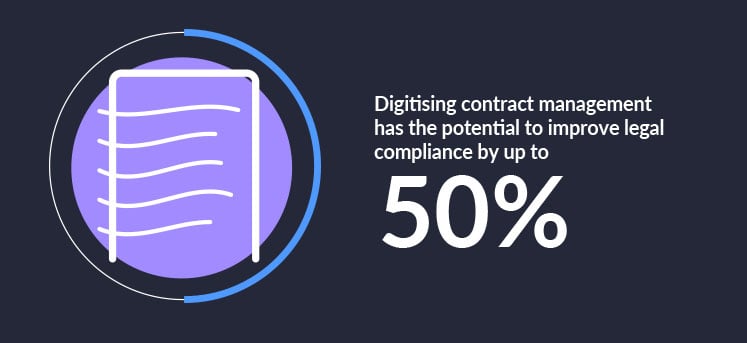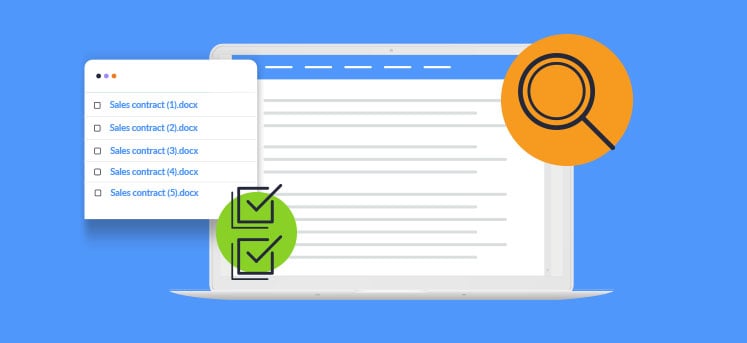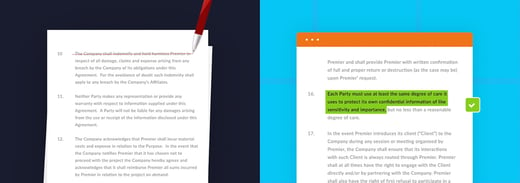How in-house lawyers can help the business to contract with greater accuracy and efficiency so the full value of every deal is realised.
A business is the sum of its contractual obligations, which means that contract negotiations are essential to a company’s success. It’s thought that businesses lose up to 40% of revenue to ineffectively negotiated contracts every year, known in the industry as ‘value leakage’.
Being able to negotiate on behalf of your firm to get the best possible outcome is no easy task. It takes a lot of experience and skill to understand where compromises need to be made, how to mitigate risk, and which positions will be acceptable by the other party. Get it right and you’ve just helped your business make a tidy profit. Get it wrong and you risk losing the deal entirely, or – even worse – forcing the company to adhere to a contract that impinges growth and profitability.
While there are always lots of details to work out, most contract negotiations can be divided into two key factors: risks and revenues. Pushed for time and with a lack of access to previous contract negotiations, it’s easy for an in-house lawyer to enter new contract negotiations with a limited understanding of the details that can lead to delays. This lack of data leads to unnecessary and time-consuming reiterations, miscommunication with counterparties and internal stakeholders, and suboptimal outcomes for all involved.
With this in mind, we’re working to change the traditional processes of contract negotiation using AI technology to empower organisations. By making the process quicker, more transparent, and more accurate, legal teams can help their organisations to unlock the full value of every deal.
Let’s take a look at the top six tips that are guaranteed to help secure successful contract negotiations.

Contract negotiation tip 1: Digitise existing contracts
Many firms’ portfolio of contracts are never revised or revisited. In fact, one survey reports that a huge 71% of companies couldn’t remember or locate around 10% of their contracts. To avoid this, each and every contract should be digitised, thereby creating a digital asset that can be examined, explored, and referenced whenever needed. Accessing them via a digital platform means businesses can keep on top of their obligations and agreements, and quickly see how their contractual requirements are impacted by changes to external factors (a global pandemic being an obvious and recent example). According to Forrester and Aberdeen, digitising contract management has the potential to improve legal compliance by up to 50%, significantly reducing risk for firms.
Contract negotiation tip 2: Digitise your risk playbook
Many companies will build a risk playbook that details what terms and conditions are and are not acceptable to the business. This serves as a frame of reference to help standardise all contracts from a legal perspective. Transferring that risk playbook into a digital format will deliver far greater consistency to all contract reviews. It will also streamline the review process for the legal team as contract reviews will be undertaken as standard, saving time and ensuring accuracy. It also means contract reviews no longer depend on a lawyer’s experience, personal interpretation, and current workload, driving greater efficiency in the contract review process.

Contract negotiation tip 3: Collaborate more
Legal is often seen as a black hole. Colleagues fail to understand the reasons for delays, and don’t know who is responsible for finding a solution. We hear the phrase “stuck in legal” far too much due to this. Transparency is key for everyone involved to understand what's required, who’s responsible. and how to reach signature. Create an ‘issues list’ that documents clauses and positions that need resolving – and not just for contracts that have the greatest monetary value. An issues list should be standard for every new deal. This list can be shared with colleagues and external parties alike, so everyone involved can see exactly what is holding the deal up, who is accountable, and what needs to happen to finalise the contract.
Contract negotiation tip 4: Prioritise effort using an issues list
For key contract negotiators such as lawyers, it can be impossible to know which areas of a contract need prioritising or attention without first having to read the whole thing. By using contract review technology, clauses that need to be prioritised or that pose the greatest risk can be flagged, allowing the legal team to prioritise their workload accordingly. These key issues can be rolled up into an issues list that the lawyer will work through with their team and the other side to gain agreements and finalise the deal.
Contract negotiation tip 5: Start from a position of knowledge
Technology means there’s no need to start each new deal with a blank piece of paper. Utilise previous negotiations to inform how you approach new deals. Learning from any previous deal blockers before heading into a new contract will save any potential back and forth on clauses that won’t be accepted. By knowing what’s important to your business and the counterparty, negotiating will be far easier and quicker. By reducing contract iterations and potential blockers, the process can accelerate to signature with fewer iterations.

Contract negotiation tip 6: What does the market say?
When both parties are standing their ground on particular positions it can be difficult to reach a compromise. Understanding which side is demanding too much if there is a lack of knowledge around what is typically acceptable in such scenarios. One huge benefit of contract review technology is that it can analyse and process volumes of other similar contacts, and build an aggregated view of industry norms. This allows legal teams to identify standard positions and thus highlight common ground where both parties should meet. A mutually beneficial compromise can be found quicker, allowing the maximum value of the deal to be realised.
Less risk, greater speed
The steps outlined above are a smart way to help refine, speed up, and improve current procurement processes. They create a far more efficient negotiation process. Modern technology is used to unlock the information firms have stored away in existing contracts, delivering a more streamlined approach to each new negotiation. Applying these steps could save your firm a lot of time and money.
By harnessing the power AI technology brings to improve and accelerate internal processes such as contract negotiation, your firm will benefit from deal velocity. Going from first contract draft to signature faster – without exposing the business to undue risk. Negotiations are now conducted from a position of knowledge and authority which gives huge confidence to the negotiator. Senior lawyers are no longer solely relied on to take the lead on contract negotiations; by adopting automated technology, junior lawyers are able to take a more active role. This not only lightens the workloads for more senior lawyers, but provides valuable experience and knowledge for junior colleagues, up-skilling them in the process.

Summary
Embracing automated, pre-contract technology, lawyers are empowered to delegate with confidence, giving them more time to focus on adding strategic value to the organisation. Deals can close much faster and with far less friction, improving business performance and ensuring the full value of each deal is realised.




